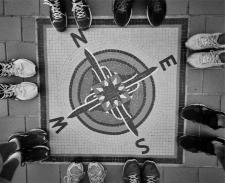CRISPR gene-editing controversy shows old ideas about East and West still prevail
By Calvin Wai-Loon Ho,
Econtimes
| 10. 24. 2016
The debate that followed initial experiments using the CRISPR-Cas9 genome editing tool show that old stereotypes about Asia still resonate in the West.
CRISPR-Cas9 is a gene editing tool that was first demonstrated US and Swedish labs in 2012. Basically, it uses segments of bacterial DNA that can make targeted cuts in a genome when paired with a specific guide protein (in this case, Cas9).
The technique is relatively uncomplicated compared with previous genome editing tools, which have been studied by scientists for more than 50 years. If applied to the genome of human germline cells, which pass on genetic material to produce human embryos, CRISPR-Cas9 has – at least in theory – the capability to alter humanity as we understand it.
Once certain genes are introduced or removed in germline cells (also known as gametes), the changes are passed onto the next generation. Given its potential to be misapplied towards eugenic ends and related ethical concerns, scientists generally agree that genetic modification of human gametes and embryos should not be done for reproductive purposes.
But it was less clear...
Related Articles
A Review of Exposed by Becky McClain
“Do not get lost in a sea of despair. Be hopeful, be optimistic. Our struggle is not the struggle of a day, a week, a month, or a year, it is the struggle of a lifetime. Never, ever be afraid to make some noise and get in good trouble, necessary trouble.”
— John Lewis
Becky McClain became famous when she successfully sued Pfizer, one of the very largest pharmaceutical and biotech companies. She...
By Katherine Long, Ben Foldy, and Lingling Wei, The Wall Street Journal | 12.13.2025
Inside a closed Los Angeles courtroom, something wasn’t right.
Clerks working for family court Judge Amy Pellman were reviewing routine surrogacy petitions when they spotted an unusual pattern: the same name, again and again.
A Chinese billionaire was seeking parental...
By Sarah Kliff, The New York Times | 12.10.2025
Micah Nerio had known since his early 30s that he wanted to be a father, even if he did not have a partner. He spent a decade saving up to pursue surrogacy, an expensive process where he would create embryos...
By Carter Sherman, The Guardian | 12.08.2025
A huge defense policy bill, revealed by US lawmakers on Sunday, does not include a provision that would have provided broad healthcare coverage for in vitro fertilization (IVF) for active-duty members of the military, despite Donald Trump’s pledge...




